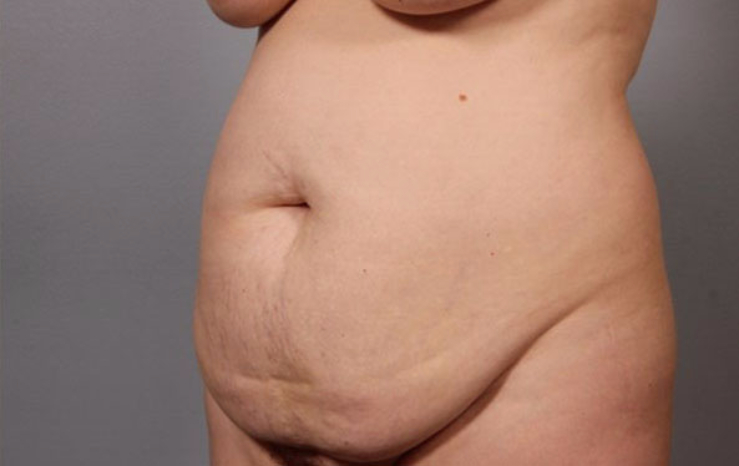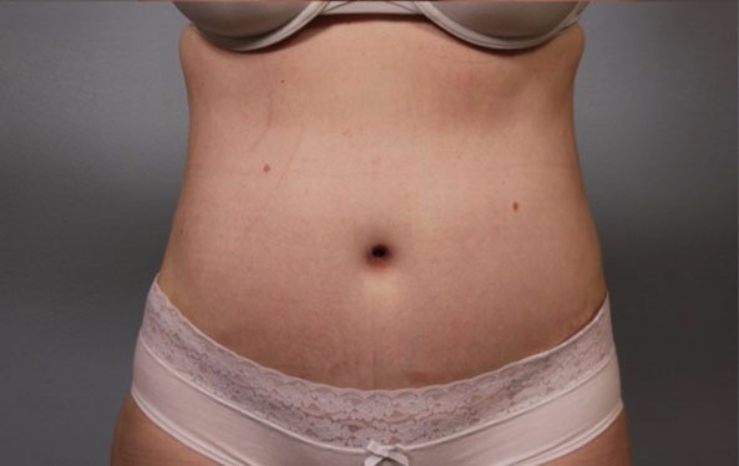Age: 36
This 36 year old mother had a cesarean section fourteen years ago. She noted that despite eating healthy foods and exercising three times a week, she could never lose her “baby weight”.
Interestingly, a recent article in the Journal of Obstetrics and Gynecology notes that one third of the women studied became overweight or obese and remained so after their pregnancy. The excess abdominal skin and localized fat pictured here does not respond to diet and exercise. In fact, an effort to correct the problem with these time honored methods will only end with frustration and a lack of success. The only permanent solution to this patient’s problem is an abdominoplasty, or tummy tuck. Four elements of a tummy tuck are needed in order for the correction to last a lifetime. First, during surgery, the surgeon will remove the skin and fat excess at and below the umbilicus, or belly button. The remaining upper abdominal skin is then elevated to the base of the rib cage, exposing the muscle separation or diastasis recti. Repair of this muscle gap is needed in order to achieve a flat contour. The third element is advancement of the remaining skin down to the suprapubic region. Stitches on the underside are needed to contour and anchor the skin in place. Fourth, the belly button or umbilicus, which has been left behind with a pit of protective tissue, is brought through a small gap in the skin and is stitched in place. There is an incision around the belly button and another extended from the location of the C-section scar. Contour improvement can be remarkable in many cases like this. If a patient maintains good eating habits and a careful exercise regimen, these results routinely last a lifetime.


